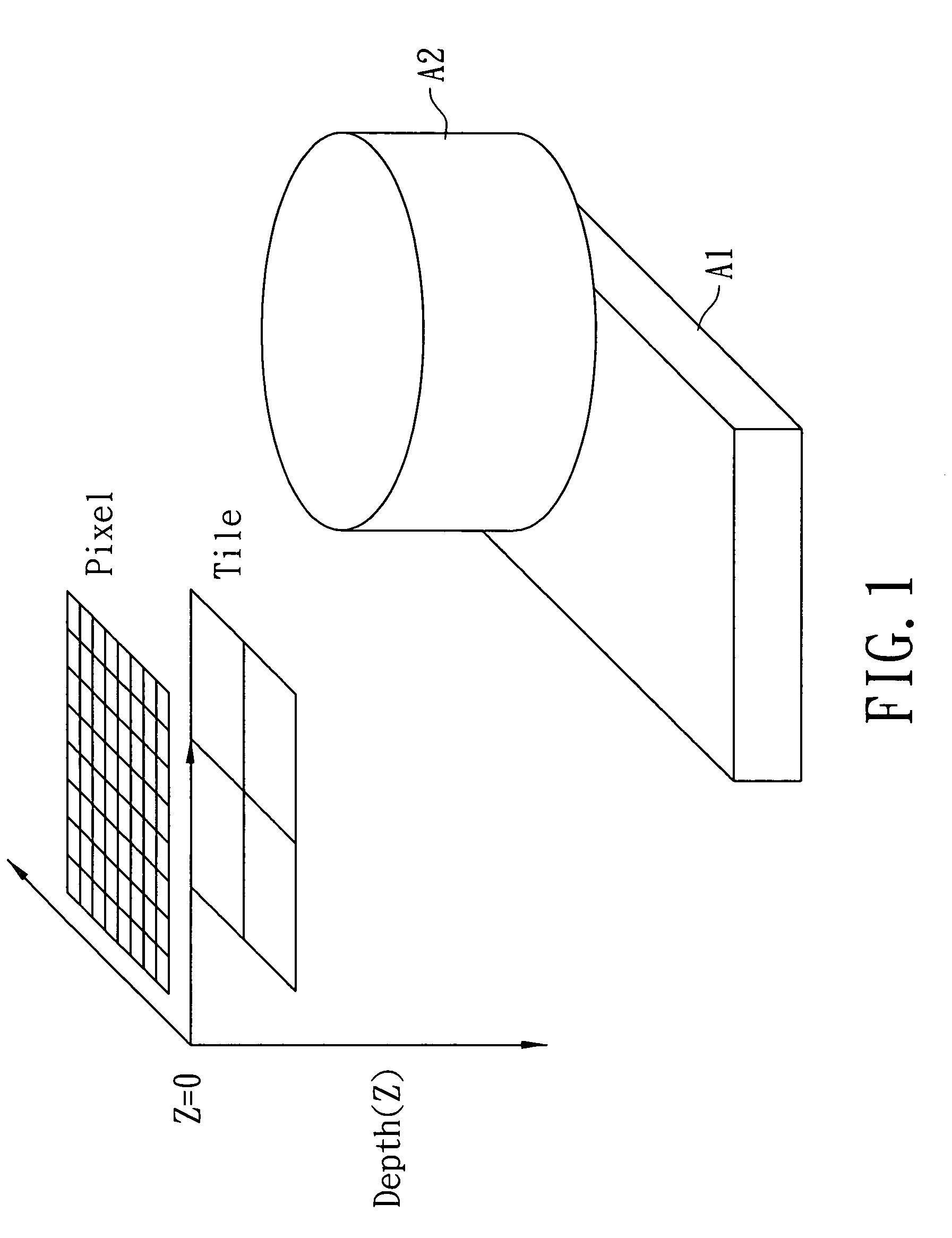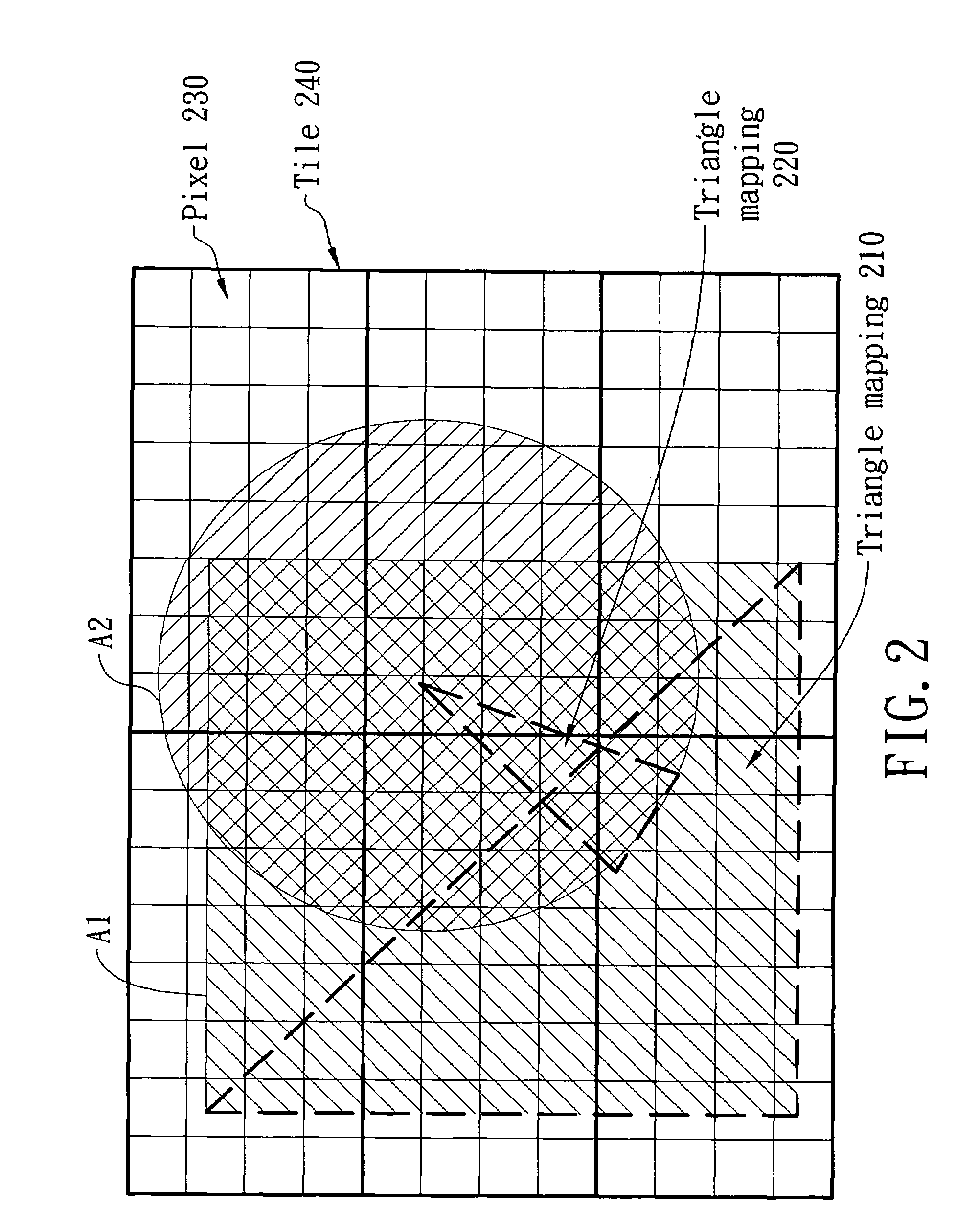System and method for adaptive tile depth filter
a technology of depth filter and filter system, which is applied in the field of filter technique in the render pipeline of three-dimensional graphics processor, can solve the problems of power consumption, hard to gather the statistics of depth information of all fragments to derive the optimal depth plane, and the amount of external memory access is the most crucial factor in power consumption, so as to save memory bandwidth, save power consumption, and cost too much memory bandwidth or power consumption
- Summary
- Abstract
- Description
- Claims
- Application Information
AI Technical Summary
Benefits of technology
Problems solved by technology
Method used
Image
Examples
Embodiment Construction
[0017]As shown on FIG. 1, in order to display three dimensional objects on a two dimensional screen, it is very important to maintain the depth relationship between those objects. A conventional depth test (Z test) in render pipeline is to read the depth information from depth buffer (Z buffer), build the depth relationship, and store (write) in Z buffer pixel by pixel. As shown on FIG. 2, the Z test has to discriminate the non-occluded and occluded fragments of every triangle mapping 210, 220 by their depth information. The memory bandwidth and the discrimination operation amount are huge and dramatically increasing depending on the depth complexity of each pixels and the total frame pixels. In the present invention, a depth filter can cull the occluded fragments at first before the Z test 330 for saving memory bandwidth and discrimination operation. Besides, the depth filter can filter out no-Z-read fragments which can go through Z test 330 without Z buffer 332 reading for saving ...
PUM
 Login to View More
Login to View More Abstract
Description
Claims
Application Information
 Login to View More
Login to View More - R&D
- Intellectual Property
- Life Sciences
- Materials
- Tech Scout
- Unparalleled Data Quality
- Higher Quality Content
- 60% Fewer Hallucinations
Browse by: Latest US Patents, China's latest patents, Technical Efficacy Thesaurus, Application Domain, Technology Topic, Popular Technical Reports.
© 2025 PatSnap. All rights reserved.Legal|Privacy policy|Modern Slavery Act Transparency Statement|Sitemap|About US| Contact US: help@patsnap.com



